The inductance of a long solenoid with \$N_o\$ turns and a length \$l_o\$ is $$L_o=\pi r^2 \mu_0\frac{N_o^2}{l_o}$$
If I now make a new solenoid, \$L_{new}\$, with double the length of the original (\$l_{new}=2l_o\$) and double the number of turns as well (in order to keep the turns per unit length constant), I clearly have a new inductor with double the inductance of the original solenoid so that \$L_{new}=2L_o\$. But doubling the length with constant \$\frac{N}{l}\$ is the same as putting two long solenoids of inductance \$L_o\$ together in series (with perfect coupling). Yet I am told that when two inductors (\$L_1\$ and \$L_2\$) are placed in a series aiding configuration, the combined inductance is (Fundamentals of electric circuits, by Alexander): $$L_{Tot}=L_1+L_2+2M$$ where \$M\$ is the mutual inductance between the two inductors with \$M=k\sqrt{L_1\cdot L_2}\$ (\$k\$ being the coupling coefficient). Suppose these inductors both have inductance \$L_o\$. Then when placed in a series aiding fashion, we have $$L_{Tot}=2L_o+2\cdot k\cdot L_o$$ The further these inductors are apart (still being in series though), presumably the smaller the coupling coefficient \$k\$ so that in the limit that they are infinitely far apart, we have \$k=0\$ and \$L_{Tot}=2L_o\$. But conversely, the closer they are the larger \$k\$ gets, so that when the end of the first just touches the beginning of the second, we surely have \$0 <k\leq 1\$. Thus, in this case we must have that \$L_{Tot}>2L_o\$. But this case is identical to the first case where we simply doubled the length of the original inductor and doubled the number of turns to get \$L_{new}=2L_o\$ so we have a contradiction. How can this be? How can we get two different values for the inductance of the same solenoid?
